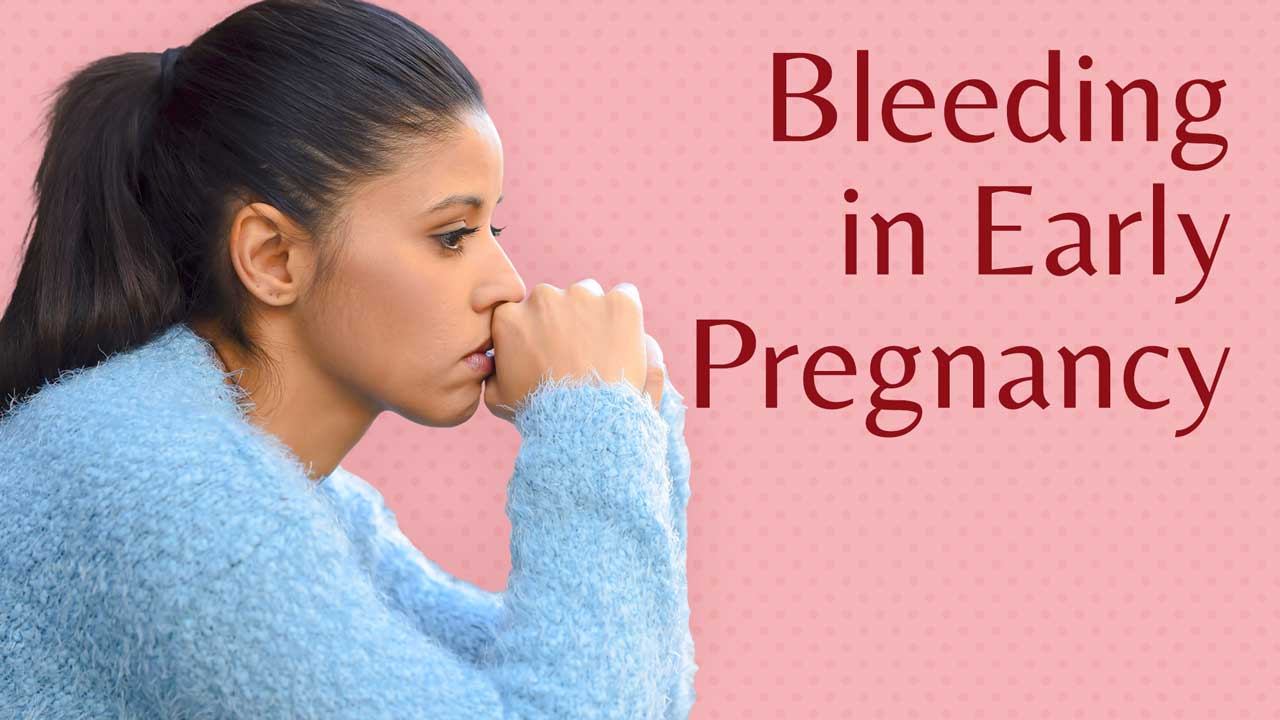Vaginal bleeding during the first trimester (first 12 weeks of gestation) is a common but often alarming symptom that occurs in up to 25% of pregnancies (Pregnancy, Birth and Baby 2024).
Despite this, many people who experience bleeding in early pregnancy will go on to deliver a healthy baby (Better Health Channel 2022).
While bleeding doesn’t always indicate a problem with the pregnancy, it should be assessed as soon as possible in case there’s a serious underlying issue (Pregnancy, Birth and Baby 2024).
What Causes Bleeding in Early Pregnancy?
Bleeding in early pregnancy is most commonly caused by either:
- Implantation
- Miscarriage
- Ectopic pregnancy
- Molar pregnancy (hydatidiform mole).
(Pregnancy, Birth and Baby 2024)
Implantation Bleeding
Implantation bleeding may occur when the fertilised egg attaches itself to the lining of the uterus. It typically presents as light bleeding or spotting and occurs one to two weeks after conception, usually around the same time menstruation would normally be expected. It may cause light cramping, but only lasts for one to two days and produces a very small amount of blood that may be light pink or brown in colour (Walker 2020).
Implantation bleeding is common and doesn’t usually indicate any issues (Marnach 2022).
Miscarriage
About one-third of people who experience bleeding during early pregnancy will go on to have a miscarriage (Better Health Channel 2022).
Miscarriage occurs in up to 20% of pregnancies, most commonly within the first trimester and usually with no identified cause (The Women’s 2020a).
Bleeding related to miscarriage may present similarly to a heavy menstrual period, with symptoms such as cramping, abdominal, pelvic or back pain, and feelings of weakness. However, some miscarriages cause no symptoms at all (Pregnancy, Birth and Baby 2023a).
Unfortunately, even if bleeding in early pregnancy is identified as an indicator of possible miscarriage, there is no medical care that can change the likelihood of losing the pregnancy (SCV 2019).
Ectopic Pregnancy
In rare cases, bleeding in early pregnancy may indicate ectopic pregnancy - wherein the fertilised egg implants itself outside of the uterus (typically in a fallopian tube, but very rarely in the abdominal space or cervix) (Pregnancy, Birth and Baby 2023b).
Unlike the uterus, the fallopian tubes are unable to expand to accommodate an embryo as it develops. Therefore, if the embryo is left to grow, it can cause the fallopian tube to rupture, potentially leading to life-threatening internal bleeding (Pregnancy, Birth and Baby 2023b).
While about half of ectopic pregnancies will miscarry on their own, those that don’t will require medical intervention. Early on in the pregnancy, this typically involves administering the medicine methotrexate to halt the embryo’s growth, but ectopic pregnancies identified in later stages of pregnancy may require surgical removal of the pregnancy sac (Pregnancy, Birth and Baby 2023b).
Bleeding caused by an ectopic pregnancy is bright or dark red and often starts and stops. Other potential symptoms include one-sided abdominal pain, shoulder tip pain, bowel pain, diarrhoea and vomiting (Pregnancy, Birth and Baby 2023b).
About 1 in 100 pregnancies are ectopic (Pregnancy, Birth and Baby 2023b).
Investigating Bleeding in Early Pregnancy
Bleeding in early pregnancy may be assessed using:
- Blood tests to determine blood group and pregnancy hormone levels
- Ultrasound scan (may require an internal probe in early pregnancy)
- Vaginal examination to assess the size of the uterus and the amount of bleeding.
(SCV 2019)
Bleeding in Later Pregnancy
Bleeding in the later stages of pregnancy is less common and may indicate a serious underlying problem (Better Health Channel 2022). Potential causes include:
- Placenta praevia, where the placenta is obstructing the cervix
- Placental abruption, where the placenta separates from the uterine wall prior to birth
- Vasa praevia, where the umbilical blood vessels run through the membranes covering the cervix.
(Pregnancy, Birth and Baby 2024)
Managing Bleeding During Early Pregnancy
If bleeding has been assessed as routine or non-problematic, patients should be encouraged to manage it by:
- Resting
- Using pads (rather than tampons)
- Avoiding sex until the bleeding has stopped
- Taking mild analgesics such as paracetamol, if required
- Ensuring they report any changes in their condition.
(Better Health Channel 2022)
When to Escalate Care
The following signs and symptoms during pregnancy require urgent medical care:
- Severe abdominal or shoulder pain
- Severe blood loss (soaking two menstrual pads within one hour or passing blood clots as large as golf balls)
- Fever
- Dizziness or collapse
- Foul-smelling vaginal discharge.
(SCV 2019)
Conclusion

Any issues during pregnancy, including bleeding, can be highly distressing for patients.
In the case of miscarriage, patients may experience feelings of grief, guilt and anxiety due to what is understandably a significant loss (SCV 2019). Ensuring access to appropriate support and providing empathetic care are crucial.
Remember that any bleeding during pregnancy should be assessed in case there is a serious underlying cause (Pregnancy, Birth and Baby 2024).
Test Your Knowledge
Question 1 of 3
Implantation bleeding typically occurs:
Topics
Further your knowledge
References
- Better Health Channel 2022, Pregnancy - Bleeding Problems, Victoria State Government, viewed 30 April 2025, https://www.betterhealth.vic.gov.au/health/healthyliving/pregnancy-bleeding-problems
- Marnach, M 2022, Is Implantation Bleeding Common in Early Pregnancy?, Mayo Clinic, viewed 30 April 2025, https://www.mayoclinic.org/healthy-lifestyle/pregnancy-week-by-week/expert-answers/implantation-bleeding/faq-20058257
- Pregnancy, Birth and Baby 2023a, What Really Happens During a Miscarriage, Healthdirect Australia, viewed 30 April 2025, https://www.pregnancybirthbaby.org.au/what-really-happens-during-a-miscarriage
- Pregnancy, Birth and Baby 2023b, Ectopic Pregnancy, Healthdirect Australia, viewed 30 April 2025, https://www.pregnancybirthbaby.org.au/ectopic-pregnancy
- Pregnancy, Birth and Baby 2024, Bleeding During Pregnancy, Healthdirect Australia, viewed 30 April 2025, https://www.pregnancybirthbaby.org.au/bleeding-during-pregnancy
- Safer Care Victoria 2019, Bleeding in Early Pregnancy, Victoria State Government, viewed 30 April 2025, https://www.bettersafercare.vic.gov.au/sites/default/files/2019-07/Bleeding%20in%20early%20pregnancy.pdf
- Walker, J 2020, What You Need to Know About Implantation Bleeding, Clearblue, viewed 30 April 2025, https://au.clearblue.com/am-i-pregnant/implantation-bleeding
- The Women’s 2020, Miscarriage, The Royal Women’s Hospital, viewed 30 April 2025, https://thewomens.r.worldssl.net/images/uploads/fact-sheets/Miscarriage-300320.pdf
 New
New 

